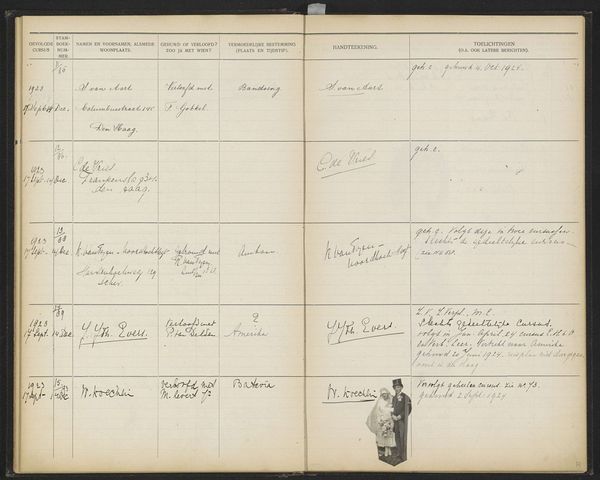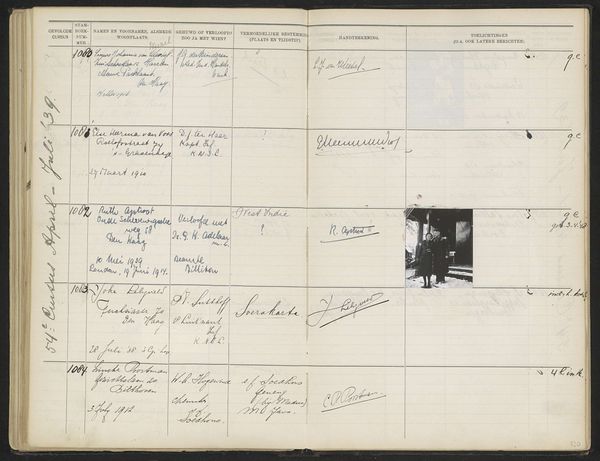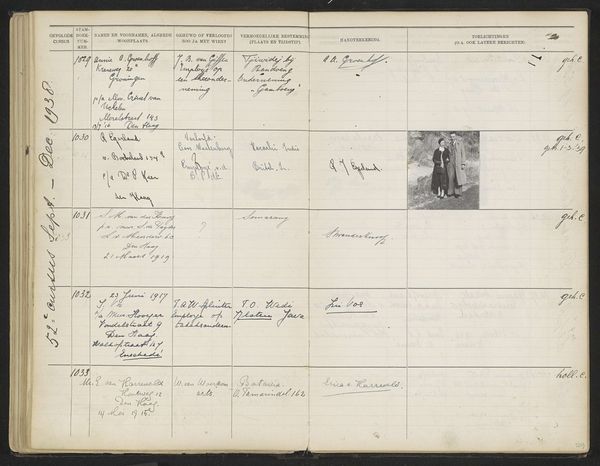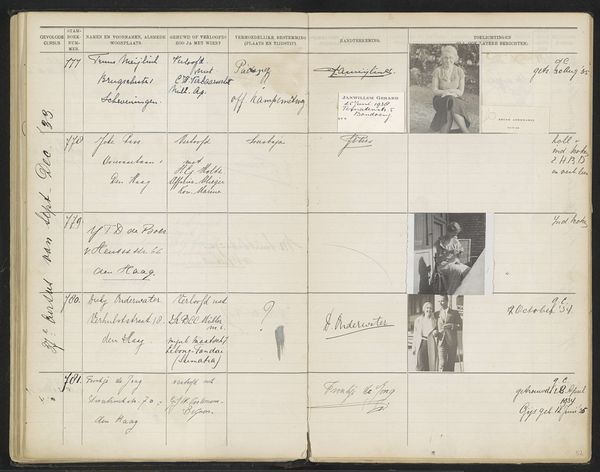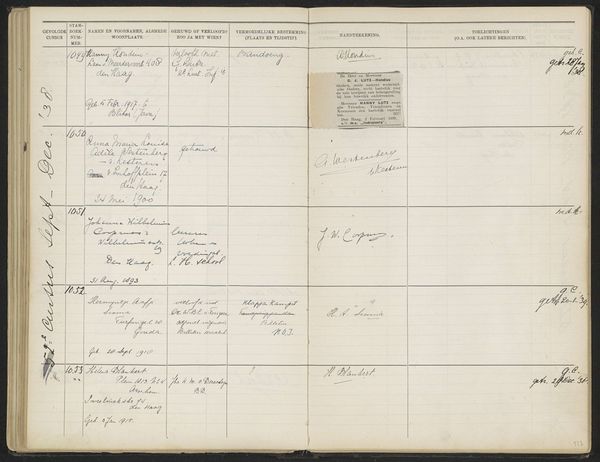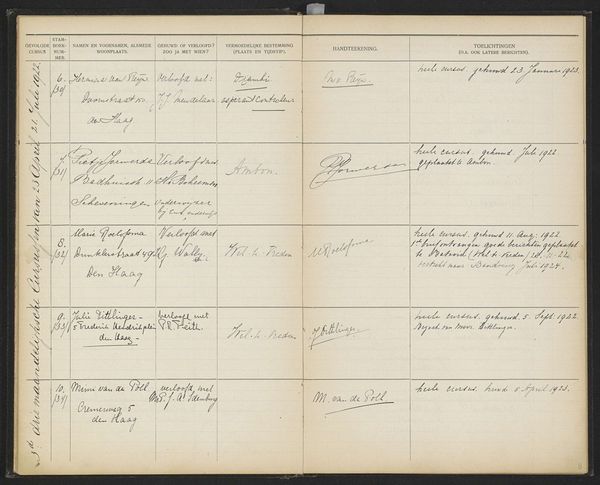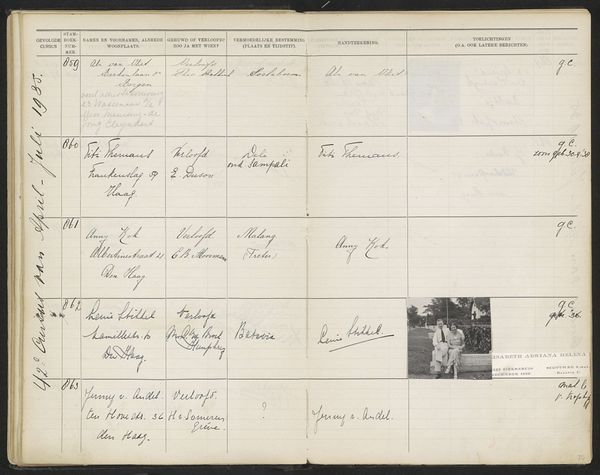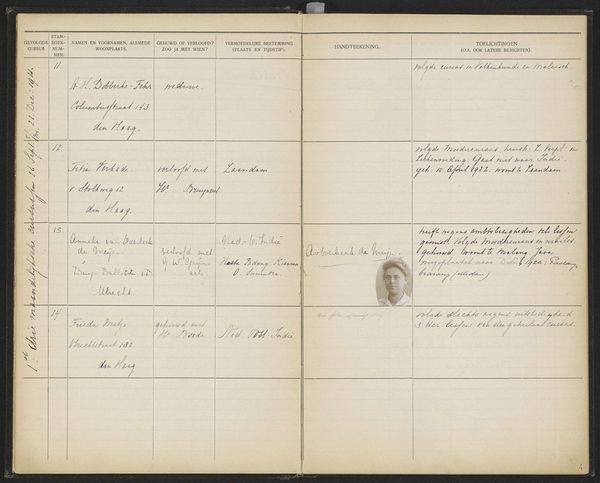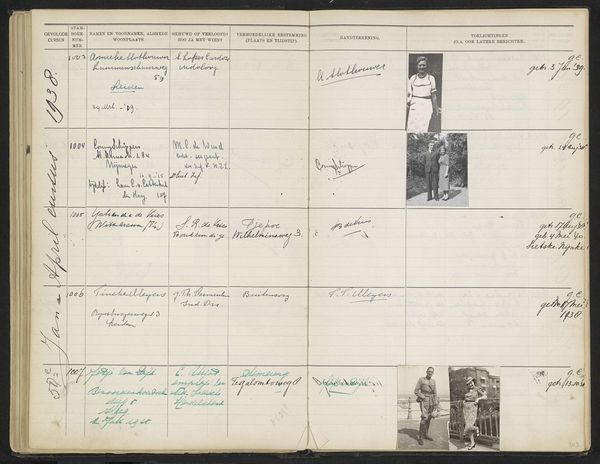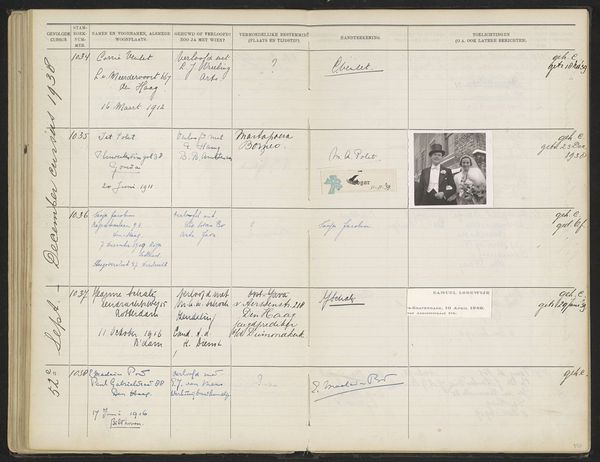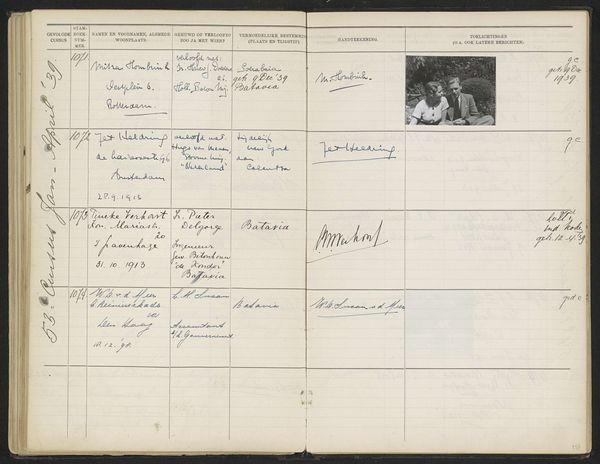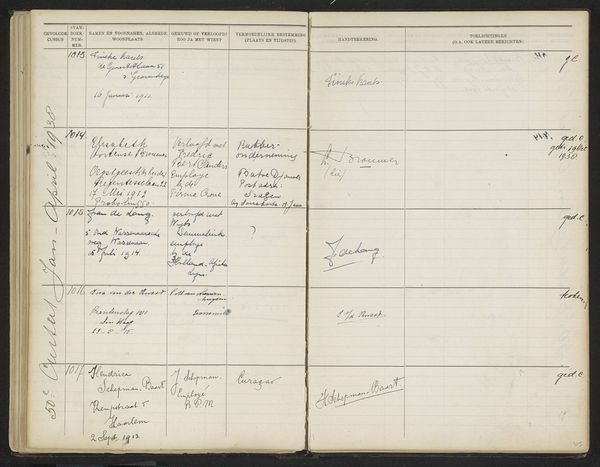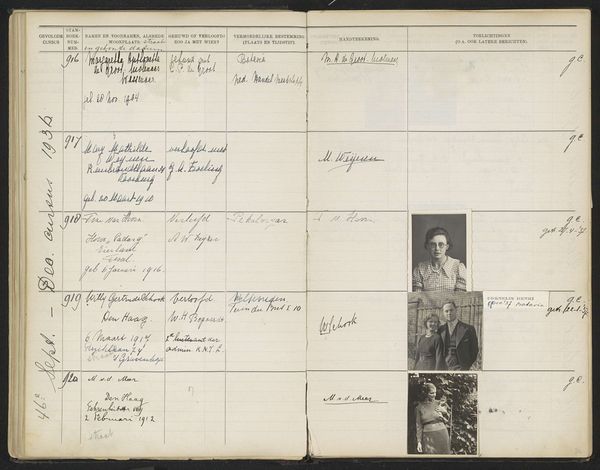
Blad 74 uit Stamboek van de leerlingen der Koloniale School voor Meisjes en Vrouwen te 's-Gravenhage deel I (1921-1929) Possibly 1928
0:00
0:00
drawing, print, paper
#
portrait
#
drawing
# print
#
paper
#
realism
Dimensions: height 340 mm, width 440 mm
Copyright: Rijks Museum: Open Domain
Curator: Look at this page from the "Stamboek van de leerlingen der Koloniale School voor Meisjes en Vrouwen te 's-Gravenhage", or Register of Students of the Colonial School for Girls and Women at The Hague, specifically Blad 74, page 74 from perhaps 1928, realized as drawing and print on paper. Editor: There's a certain chill to this. The bureaucratic black lines of the book’s page combined with the image of a person in what seems like winter clothing brings a feeling of restriction and the coming cold. It makes me question what they had to sacrifice. Curator: Sacrifice might be part of it. What's fascinating is the stark contrast between the printed bureaucratic layout, full of names, addresses and leave dates, with little added snapshots. These additions are quite curious aren't they? Especially as they break the clean, organised format, such as this attached photographic portrait of the person called Y. Votegem. Editor: Exactly! Semiotically, the photo performs an important operation in breaking up what could become a boring taxonomy. But I’m curious as to what it symbolizes for the sitter; why even keep a trace, a token, a semblance of one's past and experience and where exactly is that portrait showing us this Y. Votegen? Curator: Perhaps these images were kept to demonstrate success? They offer a fascinating glimpse into the lives of the school's alumni after, maybe while studying for colonial jobs. The image is striking, because we see the person walking towards us. I feel the person looks directly at me, and is perhaps walking into their destiny? I believe a portrait could act like a souvenir in such circumstances: to trigger powerful experiences when our past, present and future overlap. Editor: The layering of the handwritten text and the standardized headings points to an intersection of official and personal narratives; in its detail it gives a hauntingly familiar dimension to social and economic changes that were taking place in the early twentieth century and these prints provide important source data that must have been valuable even if they seem rather mundane. Curator: In looking closer at Blad 74 it’s obvious how something bureaucratic is very rich in feeling; a document becomes almost a palimpsest that shows us so many things. Editor: Indeed, looking at art works like these we appreciate how they make time work. It encourages me to wonder who might find such traces, long into the future and what meanings it would bring to them!
Comments
No comments
Be the first to comment and join the conversation on the ultimate creative platform.
